Амедео Модильяни - Жак и Берта Липшицы 1917
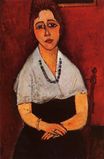 |
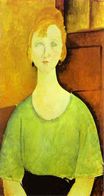 |
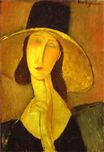 |
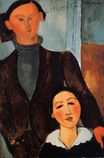 |
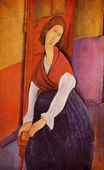 |
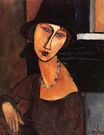 |
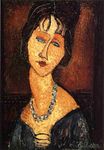 |

Жак и Берта Липшицы 1917
81x54см холст/масло
Art Institute of Chicago, United States
The image is only being used for informational and educational purposes
<< Previous G a l l e r y Next >>
From Wikipedia, the free encyclopedia:
Jacques and Berthe Lipchitz is a 1916 oil on canvas painting by Amedeo Modigliani. It depicts Modigliani's friend, the sculptor Jacques Lipchitz, standing alongside his seated wife Berthe.
Modigliani and Lipchitz had each moved to France at a young age, were both from Jewish backgrounds, and became close friends who frequented the same artistic circles in Paris. Despite their commonalities, there were marked differences: Lipchitz exemplified artistic industriousness while Modigliani was given to bohemian dissolution.
Before painting Jacques and Berthe Lipchitz Modigliani made a series of preparatory drawings, of which five survive: two of Lipchitz, two of Berthe, and one of them together in the resolved composition. Lipchitz described the painting's development years later:
In 1916, having just signed a contract with Leonce Rosenberg, the dealer, I had a little money. I was also newly married, and my wife and I decided to ask Modigliani to make our portrait. "My price is ten francs a sitting and a little alcohol, you know," he replied when I asked him to do it. He came the next day and made a lot of preliminary drawings, one right after the other, with tremendous speed and precision.... Finally a pose was decided upon— a pose inspired by our wedding photograph. The following day at one o'clock, Modigliani came with an old canvas and his box of painting materials, and we began to pose. I see him so clearly even now— sitting in front of his canvas which he had put on a chair, working quietly, interrupting only now and then to take a gulp of alcohol from the bottle standing nearby.... By the end of the day he said "Well, I guess it's finished."
Lipchitz was uncomfortable accepting the painting for merely ten francs, and made excuses in order for Modigliani to continue working on the portrait. "You know", I said, "we sculptors like more substance." "Well," he answered, "if you want me to spoil it, I can continue." The portrait occupied Modigliani for nearly two weeks, "probably the longest time he ever worked on one painting."